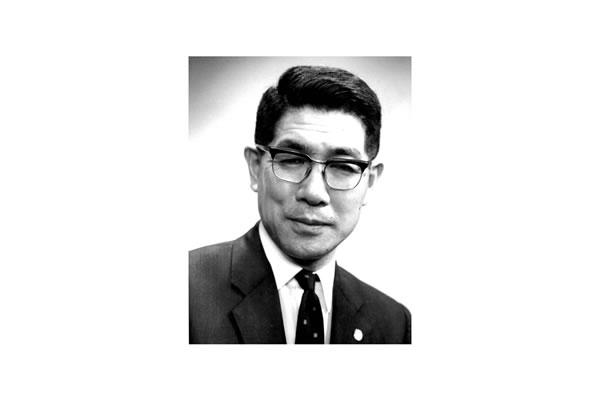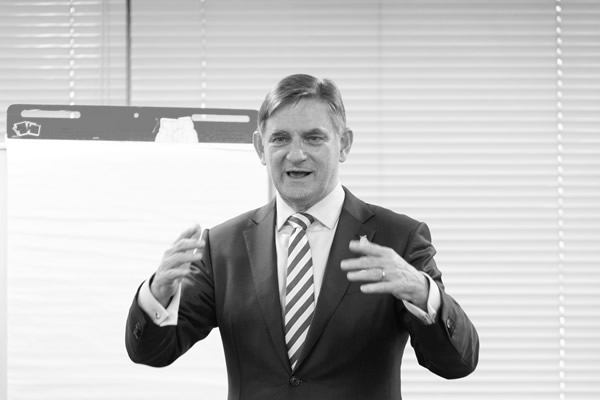How The Dale Carnegie Course Started
The development of modern companies led to the requirement for training for their employees. Most companies however did not pay for their employees to be trained and many still don’t, so the most motivated individuals seek out training and self-educate themselves. At the turn of the 20th century the training options were few and the types of resources we have today simply didn’t exist. In this milieu, Dale Carnegie launched his training company in 1912. Initially he focused on public speaking because that was an ability he had developed when he was at University. By accident he hit up on a pedagogical methodology which would revolutionize training.
He had prepared his first class and found he had run out of material during the class and in desperation, he got the participants to get up and speak about the issues facing them in business. The teaching of theory was a big part of the teaching curriculums at that time and soon Dale Carnegie realized there was a tremendous need for practical knowledge which could be applied immediately in the workplace.
When Dale Carnegie began his training course in 1912, he had no specific number of sessions in mind. He charged by the evening training session. He said, “I had to make it meaningful so the students would come back for another class”. He was selling training by the night and splitting the proceeds with the YMCA, the venue host, on West 125th Street, New York.
The programme was very successful because it filled a gap in the market for practical training which could change the lives of the participants. Gradually becoming more confident through attending the course was a central feature of the programme, as participants slowly expanded their comfort zones to try new things. Becoming more capable in speaking in front of others was a game changer, because this had been such a barrier to career progression, for so many people. Understanding how to get on with others, in particular, those who are not like us, also was a breakthrough methodology based on the thirty human relations principles which Dale Carnegie created. The demand for the course kept growing.
In 1914 he rented an office in Times Square, hired instructors, and wrote pamphlets to standardise is methods. Between 1912 and 1920 he formalised the course he was teaching at the YMCA into a program titled “The Carnegie Course in Effective Speaking”.
In 1915 he wrote “The Art of Public Speaking” with J. Berg Esenwein. In 1916 he trained the first Dale Carnegie Course instructors. For their text and for use in the YMCA schools, he wrote four volumes entitled Public Speaking which he published in 1920.
In 1922 he ended his arrangements with the YMCA on 125th Street and became independent. He began expanding out of New York and offered the course in Philadelphia, Baltimore and Boston.
In 1926 he wrote a textbook for his public speaking classes, entitled Public Speaking and Influencing Men in Business. In order to promote his course, Dale Carnegie continued to use testimonials as well as demonstration meetings and direct marketing brochures. For the first time, companies were signing up for inhouse programmes for their team members, in addition to the existing public classes for individual participants.
In the 1930s, the Dale Carnegie Course: Effective Speaking, Leadership Training, Human Relations was launched in the Midwest. In 1936, Dale Carnegie published “How To Win Friends and Influence People” which became a viral, global best seller and both the brand name and the Dale Carnegie Course took off and neither has ever looked back.
On October 1, 1944 a licensing system was created to give territories to individuals called “sponsors” to independently run the business outside of New York. Dale Carnegie began recruiting sponsors and licensed them to offer the training in order to expand the organisation’s reach in different sections of the country. In the 1940s, the Dale Carnegie Institute of Effective Speaking and Human Relations offers its first courses outside the United States, in Switzerland.
Dale Carnegie married Dorothy on November 5th, 1944 and in the same year, the Dorothy Carnegie Course was developed for career women. In 1945 he created Dale Carnegie & Associates Inc., which continues to this day. The first Annual Convention was held in Chicago in May 1945. There were twelve attendees and was a combination sales meeting and instructor refresher. From 1945 until 1956 all the annual conventions were held in Chicago or New York.
In 1947 he published the first manual for graduate assistants. In 1948 Dale Carnegie wrote How to Stop Worrying and Start Living. In 1949 Dale Carnegie experimented with the length of the course between fifteen to twenty-one sessions. By 1956, it became fourteen sessions long and this continued into the 1960s. In 1951 Dale Carnegie retired and Dorothy Carnegie took over as President of the company. Dale Carnegie and Associates tested shorter sessions of the Dale Carnegie Course for several years before officially launching the twelve week version in 1993. In 1999 a new version of the Dale Carnegie Course was released. In 2010, an eight-week version named Skills For Success was released, in response to clients’ requests for the same results, but delivered faster.
All enterprises need people who are confident, persuasive and can work with well with other people. The Dale Carnegie Course has been producing such people since 1912 and so today the kaizen on that programme is enormous, which is one of the reasons it still retains it immense popularity. In fact, many argue the course is even more important in this digital world, where ironically, although we are all hyper-connected, we are losing the human touch in our relationships. People are spending more and more of their time in front of their individual screens, as they scroll through social media and the internet. This ability to get on well with others, be persuasive and grow in confidence is a winning combination of skills and those who have benefited from the Dale Carnegie Course, invariably become the leaders in their organizations.
He had prepared his first class and found he had run out of material during the class and in desperation, he got the participants to get up and speak about the issues facing them in business. The teaching of theory was a big part of the teaching curriculums at that time and soon Dale Carnegie realized there was a tremendous need for practical knowledge which could be applied immediately in the workplace.
When Dale Carnegie began his training course in 1912, he had no specific number of sessions in mind. He charged by the evening training session. He said, “I had to make it meaningful so the students would come back for another class”. He was selling training by the night and splitting the proceeds with the YMCA, the venue host, on West 125th Street, New York.
The programme was very successful because it filled a gap in the market for practical training which could change the lives of the participants. Gradually becoming more confident through attending the course was a central feature of the programme, as participants slowly expanded their comfort zones to try new things. Becoming more capable in speaking in front of others was a game changer, because this had been such a barrier to career progression, for so many people. Understanding how to get on with others, in particular, those who are not like us, also was a breakthrough methodology based on the thirty human relations principles which Dale Carnegie created. The demand for the course kept growing.
In 1914 he rented an office in Times Square, hired instructors, and wrote pamphlets to standardise is methods. Between 1912 and 1920 he formalised the course he was teaching at the YMCA into a program titled “The Carnegie Course in Effective Speaking”.
In 1915 he wrote “The Art of Public Speaking” with J. Berg Esenwein. In 1916 he trained the first Dale Carnegie Course instructors. For their text and for use in the YMCA schools, he wrote four volumes entitled Public Speaking which he published in 1920.
In 1922 he ended his arrangements with the YMCA on 125th Street and became independent. He began expanding out of New York and offered the course in Philadelphia, Baltimore and Boston.
In 1926 he wrote a textbook for his public speaking classes, entitled Public Speaking and Influencing Men in Business. In order to promote his course, Dale Carnegie continued to use testimonials as well as demonstration meetings and direct marketing brochures. For the first time, companies were signing up for inhouse programmes for their team members, in addition to the existing public classes for individual participants.
In the 1930s, the Dale Carnegie Course: Effective Speaking, Leadership Training, Human Relations was launched in the Midwest. In 1936, Dale Carnegie published “How To Win Friends and Influence People” which became a viral, global best seller and both the brand name and the Dale Carnegie Course took off and neither has ever looked back.
On October 1, 1944 a licensing system was created to give territories to individuals called “sponsors” to independently run the business outside of New York. Dale Carnegie began recruiting sponsors and licensed them to offer the training in order to expand the organisation’s reach in different sections of the country. In the 1940s, the Dale Carnegie Institute of Effective Speaking and Human Relations offers its first courses outside the United States, in Switzerland.
Dale Carnegie married Dorothy on November 5th, 1944 and in the same year, the Dorothy Carnegie Course was developed for career women. In 1945 he created Dale Carnegie & Associates Inc., which continues to this day. The first Annual Convention was held in Chicago in May 1945. There were twelve attendees and was a combination sales meeting and instructor refresher. From 1945 until 1956 all the annual conventions were held in Chicago or New York.
In 1947 he published the first manual for graduate assistants. In 1948 Dale Carnegie wrote How to Stop Worrying and Start Living. In 1949 Dale Carnegie experimented with the length of the course between fifteen to twenty-one sessions. By 1956, it became fourteen sessions long and this continued into the 1960s. In 1951 Dale Carnegie retired and Dorothy Carnegie took over as President of the company. Dale Carnegie and Associates tested shorter sessions of the Dale Carnegie Course for several years before officially launching the twelve week version in 1993. In 1999 a new version of the Dale Carnegie Course was released. In 2010, an eight-week version named Skills For Success was released, in response to clients’ requests for the same results, but delivered faster.
All enterprises need people who are confident, persuasive and can work with well with other people. The Dale Carnegie Course has been producing such people since 1912 and so today the kaizen on that programme is enormous, which is one of the reasons it still retains it immense popularity. In fact, many argue the course is even more important in this digital world, where ironically, although we are all hyper-connected, we are losing the human touch in our relationships. People are spending more and more of their time in front of their individual screens, as they scroll through social media and the internet. This ability to get on well with others, be persuasive and grow in confidence is a winning combination of skills and those who have benefited from the Dale Carnegie Course, invariably become the leaders in their organizations.
Relevant Pages
Dale Carnegie Tokyo Japan sends newsletters on the latest news and valuable tips for solving business, workplace and personal challenges.

 Company Information
Company Information President’s Greeting
President’s Greeting Yukinaga “Frank” Mochizuki: Father Of Dale Carnegie Training In Japan
Yukinaga “Frank” Mochizuki: Father Of Dale Carnegie Training In Japan Dr. Greg Story: President Dale Carnegie Training Japan
Dr. Greg Story: President Dale Carnegie Training Japan